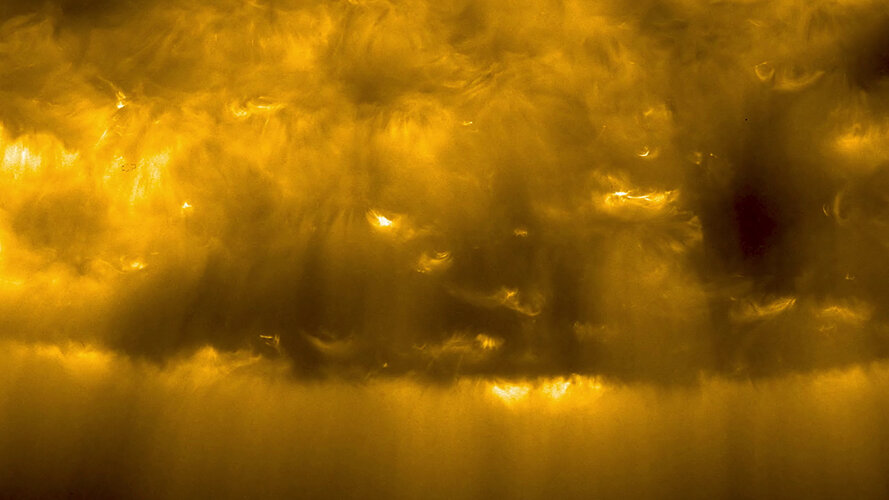
On 21 March, a few days before perihelion, a cloud of energetic particles swept across the spacecraft. It was detected by the Energetic Particle Detector (EPD). Tellingly, the most energetic of them arrived first, followed by those of lower and lower energies.
“This suggests that the particles are not produced close to the spacecraft,” says Javier Rodríguez-Pacheco, University of Alcalá, Spain, and EPD’s PI. Instead, they were produced in the solar atmosphere, nearer the Sun’s surface. While crossing space, the faster particles pulled ahead of the slower ones, like runners in a sprint.
On the same day, the Radio and Plasma Waves (RPW) experiment saw them coming, picking up the strong characteristic sweep of radio frequencies produced when accelerated particles – mostly electrons – spiral outwards along the Sun’s magnetic field lines. RPW then detected oscillations known as Langmuir waves. “These are a sign that the energetic electrons have arrived at the spacecraft,” says Milan Maksimovic, LESIA, Observatoire de Paris, France, and RPW PI.
Of the remote sensing instruments, both EUI and the X-ray Spectrometer/Telescope (STIX) saw events on the Sun that could have been responsible for the release of the particles. While the particles that stream outwards into space are the ones that EPD and RPW detected, it is important to remember that other particles can travel downwards from the event, striking the lower levels of the Sun’s atmosphere. This is where STIX comes in.
While EUI see the ultraviolet light released from the site of the flare in the atmosphere of the Sun, STIX see the X-rays that are produced when electrons accelerated by the flare interact with atomic nuclei in the lower levels of the Sun’s atmosphere.
Exactly how these observations are all linked is now a matter for the teams to investigate. There is some indication from the composition of the particles detected by EPD that they were likely accelerated by a coronal shock in a more gradual event rather than impulsively from a flare.
“It could be that you have multiple acceleration sites,” says Samuel Krucker, FHNW, Switzerland, and PI for STIX.



